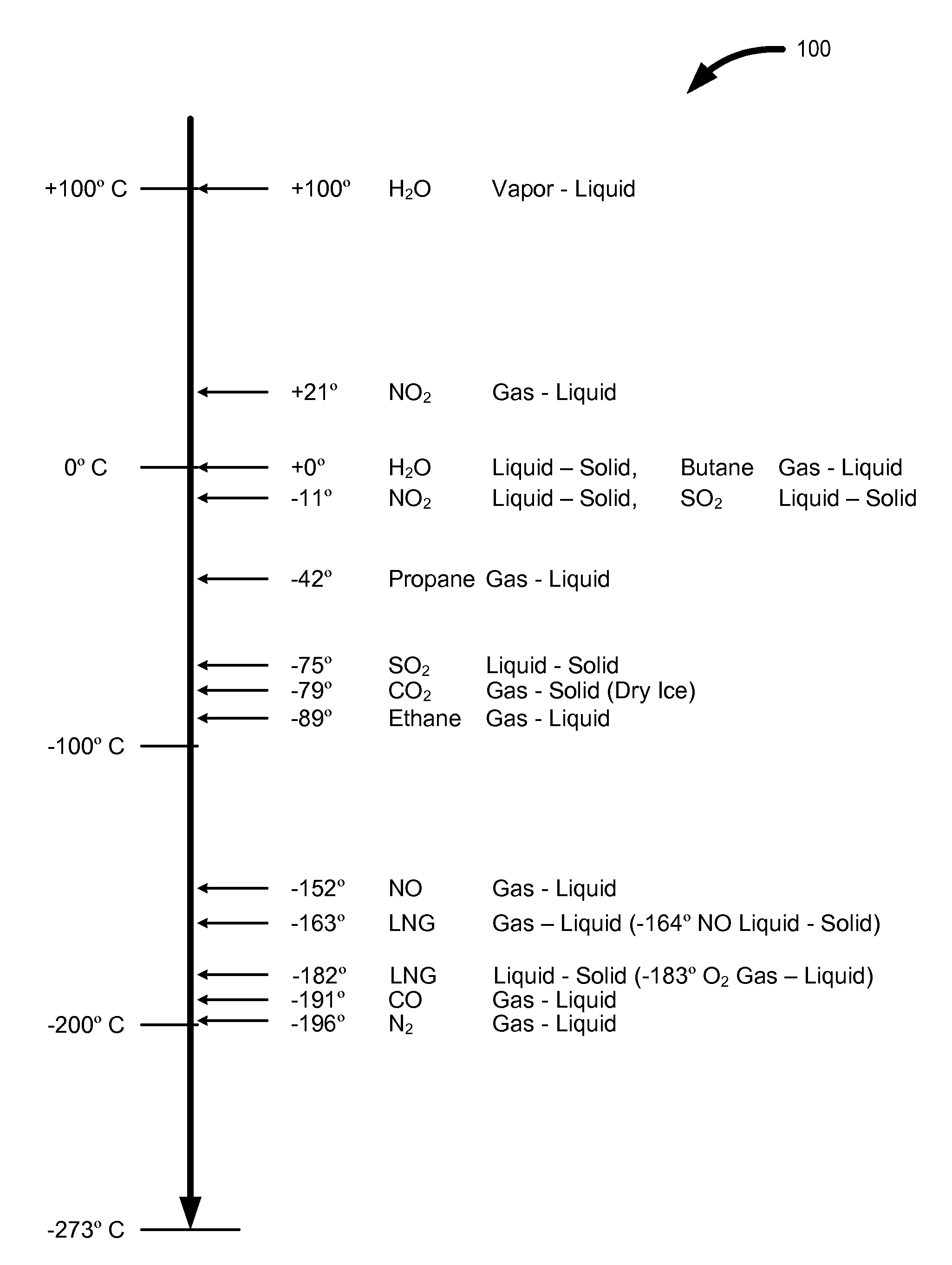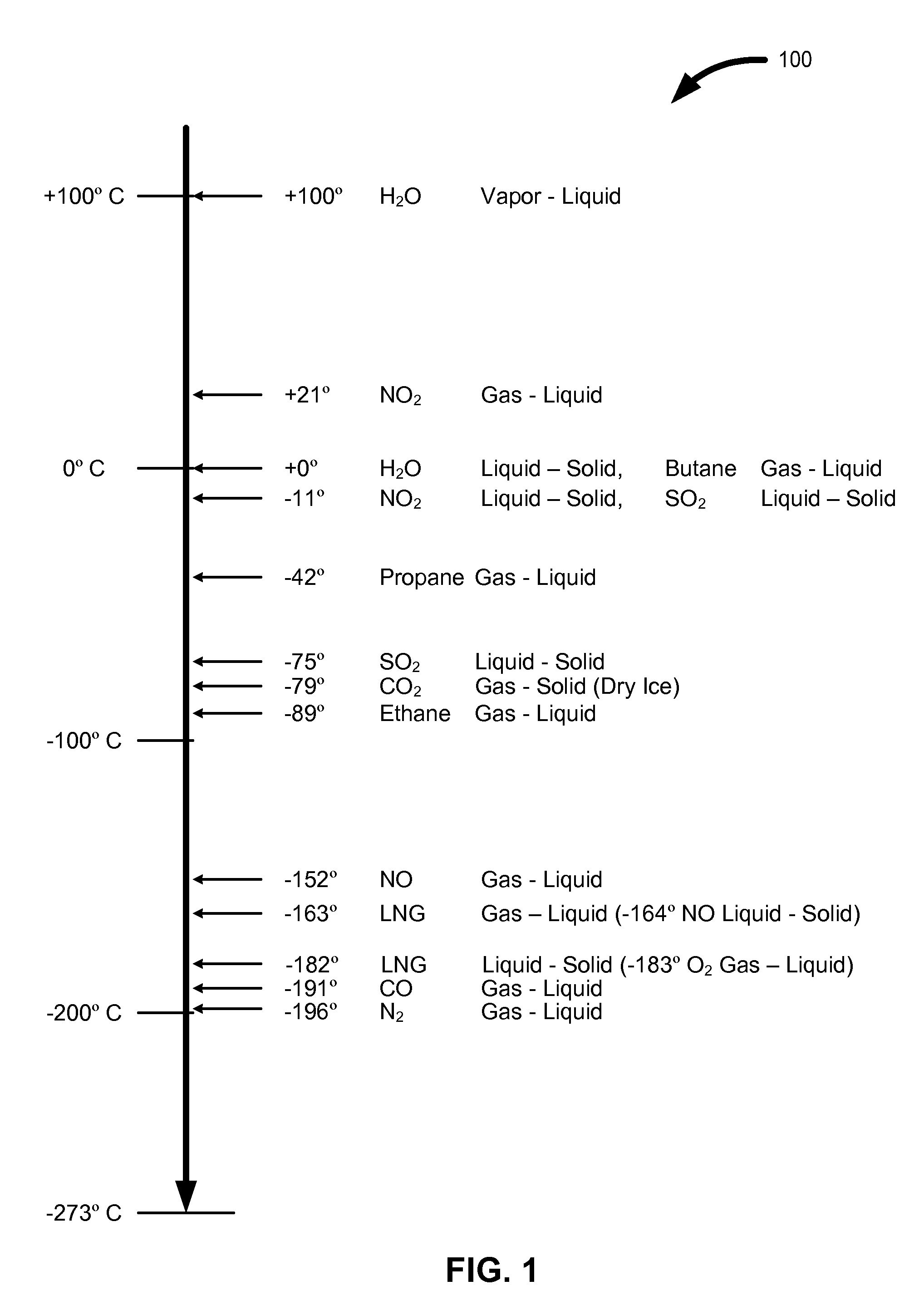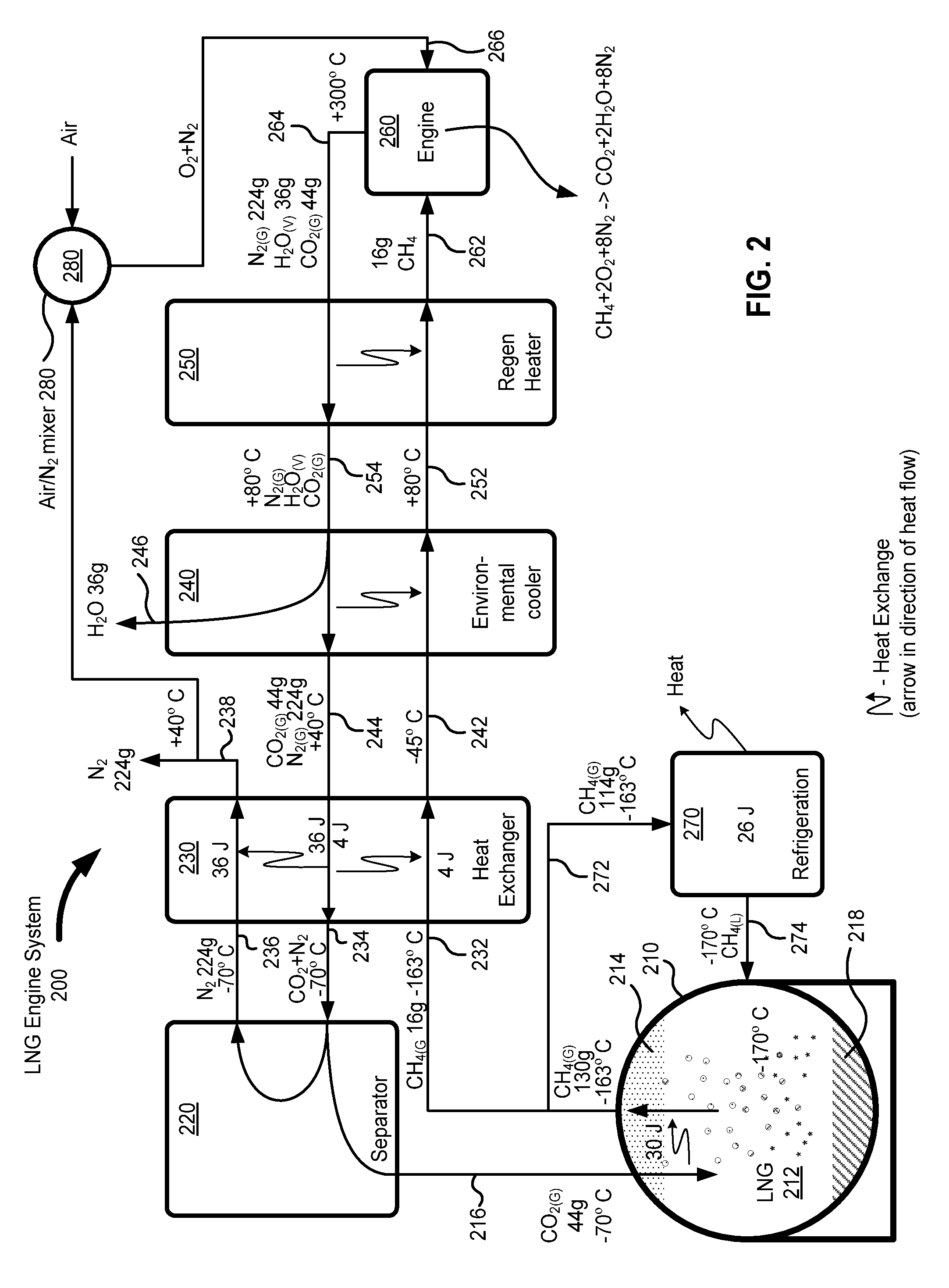System and method for sequestering emissions from engines
a technology of emission control system and emission storage method, which is applied in the direction of machines/engines, separation processes, lighting and heating apparatus, etc., can solve the problems of large volume of tanks, large energy requirements, and difficulty in separating nitrogen gas from carbon dioxide gas
- Summary
- Abstract
- Description
- Claims
- Application Information
AI Technical Summary
Benefits of technology
Problems solved by technology
Method used
Image
Examples
Embodiment Construction
[0020]FIG. 1 is a chart 100 illustrating temperatures for phase changes of various molecules. The temperatures illustrated in FIG. 1 are approximate temperatures in degrees Celsius for phase changes that occur at about one atmosphere pressure. The illustrated phase changes include vapor to liquid for water (100°), gas to liquid for LNG (−163°), liquid to solid for LNG (−182°), and gas to solid (sublimation) for carbon dioxide to dry ice (−79°). The chart 100 further illustrates phase changes including gas to liquid for nitrogen dioxide (+21°), butane (0°), propane (−42°), ethane (−89°), nitric oxide (−152°), oxygen (−183°), carbon monoxide (−192°), and nitrogen (−196°). Additional phase changes illustrated in the chart 100 include liquid to solid for water (0°), nitrogen dioxide (−11°), and nitrous oxide (−164°). Natural gas includes primarily methane. However, natural gas includes ethane, propane, butane and other hydrocarbons. Since natural gas is primarily methane, the terms natu...
PUM
 Login to View More
Login to View More Abstract
Description
Claims
Application Information
 Login to View More
Login to View More - R&D
- Intellectual Property
- Life Sciences
- Materials
- Tech Scout
- Unparalleled Data Quality
- Higher Quality Content
- 60% Fewer Hallucinations
Browse by: Latest US Patents, China's latest patents, Technical Efficacy Thesaurus, Application Domain, Technology Topic, Popular Technical Reports.
© 2025 PatSnap. All rights reserved.Legal|Privacy policy|Modern Slavery Act Transparency Statement|Sitemap|About US| Contact US: help@patsnap.com



